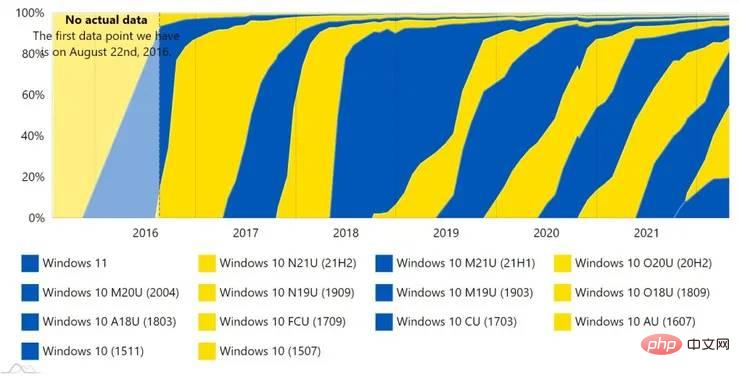AdDuplex: Windows 11 usage share grew less than 0.4% in April
Microsoft launched Windows 11 to much fanfare, but the operating system seems to be having a hard time convincing people to use it. According to AdDuplex data for April, Windows 11's usage share increased by less than 0.4% and currently stands at 19.7%, compared with 19.4% last month.

Microsoft's Windows 11 is undoubtedly more modern and much better than Windows 10 in many ways, but not all CPUs support the latest Windows operating system. Additionally, the device requires a Trusted Platform Module (TPM) 2.0 cryptographic processor to run Microsoft's latest desktop operating system smoothly. Upgrading to Windows 10 is easier and simpler than Windows 11. Additionally, Windows 11 is currently missing some important features, such as the ability to move the taskbar to the top of the screen. These may be some of the reasons why Windows 11 usage share growth has stalled.
Windows 11 currently requires Intel 8th Generation Coffee Lake or AMD Zen and Zen 2 or newer CPUs. To give you an idea, if your PC is older than 2017, it’s unlikely to have the latest Windows operating system installed. Even if you manage to install it, the experience won't be as good as you want.

The April survey also showed that Windows 10 21H2 had a market share of 35%, while Windows 10 21H1 was not far behind with a market share of 26.4%. Other versions of Windows 10 hold single-digit market share. It’s worth noting that 0.7% of PCs are currently running Windows 11 Insider builds.
However, it’s worth noting that we surveyed approximately 60,000 Windows 10 and 11 PCs running AdDuplex monitoring software to give us insight into the market share of various Windows versions. Of course, 60,000 is a small sample size, so what AdDuplex posted doesn't tell the full story, so you should take it with a grain of salt.
The above is the detailed content of AdDuplex: Windows 11 usage share grew less than 0.4% in April. For more information, please follow other related articles on the PHP Chinese website!

Hot AI Tools

Undresser.AI Undress
AI-powered app for creating realistic nude photos

AI Clothes Remover
Online AI tool for removing clothes from photos.

Undress AI Tool
Undress images for free

Clothoff.io
AI clothes remover

Video Face Swap
Swap faces in any video effortlessly with our completely free AI face swap tool!

Hot Article

Hot Tools

Notepad++7.3.1
Easy-to-use and free code editor

SublimeText3 Chinese version
Chinese version, very easy to use

Zend Studio 13.0.1
Powerful PHP integrated development environment

Dreamweaver CS6
Visual web development tools

SublimeText3 Mac version
God-level code editing software (SublimeText3)

Hot Topics
 1393
1393
 52
52
 1207
1207
 24
24


